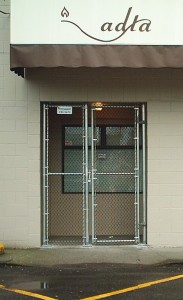What you should know concerning the above picture is that the times are not a special time set aside for couples or ‘Date Night’ time. The times cited are the existing times for the long established, often promoted and well advertized toonie ($2) swims; they are not any new program or promotion.
I have no idea what makes someone (or someones) with the city think that taking a date to the madhouse that is cheap/toonie swim is a good idea. Although I suppose it would make your dating life considerably less expensive since you would not be faced with the expense of a second or subsequent date(s).
Having the large poster, leaflets and other advertising materials produced is not inexpensive, a cost of thousands or tens of thousands of dollars.
Given that toonie swims are already well promoted and advertised, and assuming anyone is so injudicious as to think a crowded cheap swim is a good idea for a date, simple mathematics tells you that the cost of this new promotion will be significantly higher than any additional revenue generated from said new promotion.
I suppose in light of Abbotsford City Hall’s demonstrated lack of any mathematical skill and it’s proclivity to spend millions of dollars in order to ‘save’ taxpayers thousands of dollars, this kind of fiscally irresponsible behaviour is not out of character.
Still …… this campaign …… seems more like an excuse to pay someone for a ‘promotional campaign’. Makes one wonder who was paid to prepare the advertising materials and what their relationship to city hall, city council or the Abbotsford Heat is?
**************************************************************
Silly Season Open?
Under (sadly) the heading of more typical City behaviour I see that the lifeguards at the Abbotsford Rec Centre have been naughty and as a result will now have to bring their own personal towel to work.
It seems the lifeguards were not being diligent about making sure the supplied towels were getting washed and dried I a timely or consistent fashion. Behaviour not all that surprising considering many of the instructors are teenagers or UFV students.
Now I can think of several ways to ‘encourage’ or achieve compliance without the need of resorting to ‘if you don’t play the way I want I’m taking my toys (towels) and going home’ behaviour. Although, perhaps it is not all that surprising in light of numerous other examples of city staff and/or city council behaving more like a child rather than an adult.
**************************************************************
If you examine the special deal the city is offering on the date night promotion leaflet above you will see they are offering $2 off the regular admission price on Friday night at ARC; as a result of this you pay $3.85 (5.85 – 2.00) to get in on Friday under the City’s ‘special deal’.
If, instead of taking advantage of the ‘savings’ you waited until the Friday night $2 swim started you would avoid the $1.85 cost of the City ‘saving’ you money.
If it were not driving the City and taxpayers into bankruptcy territory it would be blackly humorous that even the smallest monetary ‘savings’ by the city results in citizens paying more than they would have without the city ‘saving’ them money.
Which is why, upon hearing words like “a deal, have we got a deal for you, savings, profit, on budget, good idea, a good plan” etc come out of the mouths of the mayor, city councillors or city staff, informed citizens:
1. are filled with foreboding and thoughts of ‘Not Again!”
2. place their hands in their pockets (purse) and take a very firm grip on their wallets.
3. say NO, loudly and firmly
4. urge their fellow citizens to “Just say NO!”
**************************************************************
Of course if someone at the city did have a good idea – say having recycling bins at the recreation centres so people who had no convenient way to recycle would have easy access and could recycle – someone at the city would probably come up with something that would negate the good idea.
Say – by putting the recycling bins behind a locked door.
















